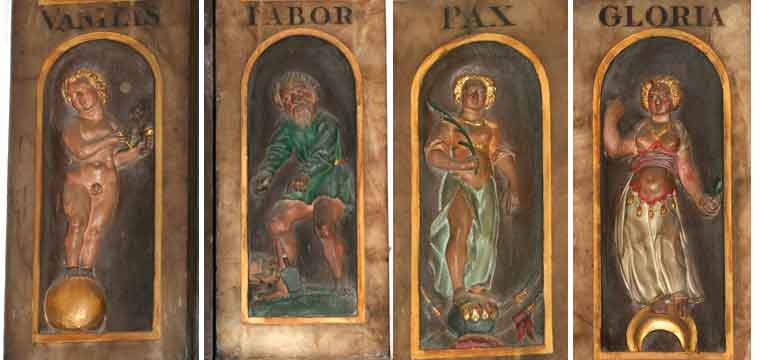Christopher Layer 1531- 1600

Christopher's father William was a grocer by trade. They were descended from the Layers of Bury in Suffolk, William was the first to settle in Norwich in which city he attained the rank of Sheriff in 1526 and Mayor in 1537.
Christopher and his brother Thomas both followed in their father's footsteps. With Christopher himself being sheriff in 1569. Mayor in 1581 and 1589 and Burgess in Parliament in 1585 and 1597.
He and his wife Barbara, daughter of Augustine Steward, had eight children all carved on his monument in St John Maddermarket
The Monument

The monument is typical of the Jaobean period complete with kneeling figures beside prayer desks, the inclusion of children (daughters behing their mother, sons behind their father), a wide range of embellishments and allegorical figures, which in this case represent peace, glory vanity and labour.
Above Christopher and Barabara are their respective family coat of arms, these are topped by ribbons tied in love knots.
Noel Spencer reports that many monuments of this period "to city merchants, tradespeople or to newer members of the squirearchy, soon pall - that many of them are poor in design and overloded with with ornament"
Although the above quote could be applied in this case it is well worth a visit as the allegorical figures are particularly amusing amd it is a lovely bright piece to see.
Click here for a readable view of the inscription
What the Monument tells us.

The allegorical figures symbolise Vanity, Labour, Peace and Glory. All have their own elements of symbolism: Vanity is depicted as a boy with golden curls standing on a large golden ball blowing bubbles in which he admires his appearance,Peace holds an olive branch vanquishing war represented by an armour and weapons which all lie beneath her feet, Labour holds a spade (which can represent the end of life's work) and appears to be burying a skull (which represents death), Glory stands victorious on a crescent moon. As a group they represent different facets of life
In the centre of the monument a skull again represents death although the sun rising above shows there is life after death. The love knots above the shields represent the couples affection for each other.

